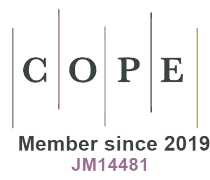Relacje transatlantyckie w postbipolarnym świecie: Strategia dla „Nowej Europy”
DOI:
https://doi.org/10.18778/1427-9657.05.04Słowa kluczowe:
stosunki transatlantyckie, „Nowa Europa”, Europa Środkowa i Wschodnia, bezpieczeństwoAbstrakt
Współcześnie region określany mianem Nowej Europy doświadcza złożonego i ważnego okresu rozwoju w swojej historii. Większość państw regionu znajduje się na ostatnim etapie transformacji: zrywają z pozostałościami geopolitycznego porządku z czasów dominacji Związku Radzieckiego i koncentrują się na uczestnictwie w formach regionalnej lub globalnej integracji. Podobny scenariusz miał miejsce w Europie Środkowo-Wschodniej pod koniec XX w. W obu przypadkach kluczowe znaczenie miało oddziaływanie aktorów zewnętrznych, głównie jednoczącej się Europy i Stanów Zjednoczonych, którzy budowali paradygmat rozwoju państw regionu. Stawały one w obliczu dylematu wyboru pomiędzy atlantyckim wektorem polityki zagranicznej (pozycja Stanów Zjednoczonych jest tradycyjnie mocna w regionie) a pogłębianiem współpracy z Unią Europejską, do której większość z nich należy.
Bibliografia
p>75% of Europeans Would Vote for Obama: Report, http://www.cnbc.com/id/49003594 (28.11.2016).
Google Scholar
Fischer J., Provincial Europe, http://www.project-syndicate.org/commentary/europe-s-missing-foreign-and-security-policy-by-joschka-fischer (28.11.2016).
Google Scholar
Foreign Policy of the Republic of Poland in 1991 / Sejm Expose by the Polish Foreign Minister Krzysztof Skubiszewski, Warsaw, June 27, 1991, [in:] Poland’s Security Policy. 1989–2000, ed. R. Kuzniar, Warsaw 2001.
Google Scholar
Framework for Advancing Transatlantic Economic Integration between the European Union and the United States of America, Washington. April 30, 2007, http://ec.europa.eu/external_relations/us/sum04_07/framework_transatlantic_economic_integration.pdf (28.11.2016).
Google Scholar
Kagan F., Of Paradise and Power: American and Europe in the New World Order, Alfred A. Knopf, New York 2003.
Google Scholar
Kagan R., President Obama’s Foreign Policy Paradox, “Washington Post”, 26.03.2014, https://www.washingtonpost.com/opinions/west-must-prepare-for-a-long-struggle-with-russia/2014/03/26/5901d78c-b4fc-11e3-b899-20667de76985_story.html (28.11.2016).
Google Scholar
Kulesa L., Missile Defense Dossier. The Polish Perspective, “PISM Papers” 2007, https://www.files.ethz.ch/isn/141188/pv_20070412_eng.pdf (27.11.2016).
Google Scholar
The New Transatlantic Agenda, http://ec.europa.eu/external_relations/us/docs/new_transatlantic_agenda_en.pdf (28.11.2016).
Google Scholar
Nowak B., Polish Foreign Policy: End of the “Golden Years”, 27.01.2015, http://www.transatlanticacademy.org/node/771 (28.11.2016).
Google Scholar
Pilawski K., Wypędzona historia, “Tygodnik Przegląd”, 21.02.2011, http://www.tygodnikprzeglad.pl/krzysztof-pilawski-wypedzona-historia/ (28.11.2016).
Google Scholar
Rohac D., What Happened to New Europe?, “The American Interest”, 08.05.2015, http://www.the-american-interest.com/2015/05/08/what-happened-to-new-europe/ (28.11.2016).
Google Scholar
Romero F., What do We Share? Friends again? EU-US Relations after the Crisis, ed. M. Zaborowski, Paris, EU Institute for Security Studies, 2006.
Google Scholar
Solana J., Ukraine: Just a Little Historical Perspective, 13.07.2015, http://www.brookings.edu/blogs/order-from-chaos/posts/2015/07/13-ukraine-historical-perspective-solana (28.11.2016).
Google Scholar
Transatlantic Declaration on EC-US relations, 1990, https://useu.usmission.gov/1990transatlantic_declaration.html (28.11.2016).
Google Scholar
Transatlantic Economic Partnership, 1998, http://ec.europa.eu/external_relations/us/docs/trans_econ_partner_11_98_en.pdf (28.11.2016).
Google Scholar
Transatlantic Trends. Key Findings 2008, German Marshall Fund, 2008, http://www.gmfus.org/trends/doc/2008_English_Key.pdf (28.11.2016).
Google Scholar
The United States and the European Union Initiative to Enhance Transatlantic Economic Integration and Growth, Washington, June 20, 2005, http://www.eurunion.org/partner/summit/Summit0506/EconomicInitiative06-17.doc (28.11.2016).
Google Scholar
Pobrania
Opublikowane
Jak cytować
Numer
Dział
Licencja

Utwór dostępny jest na licencji Creative Commons Uznanie autorstwa – Użycie niekomercyjne – Bez utworów zależnych 4.0 Międzynarodowe.










